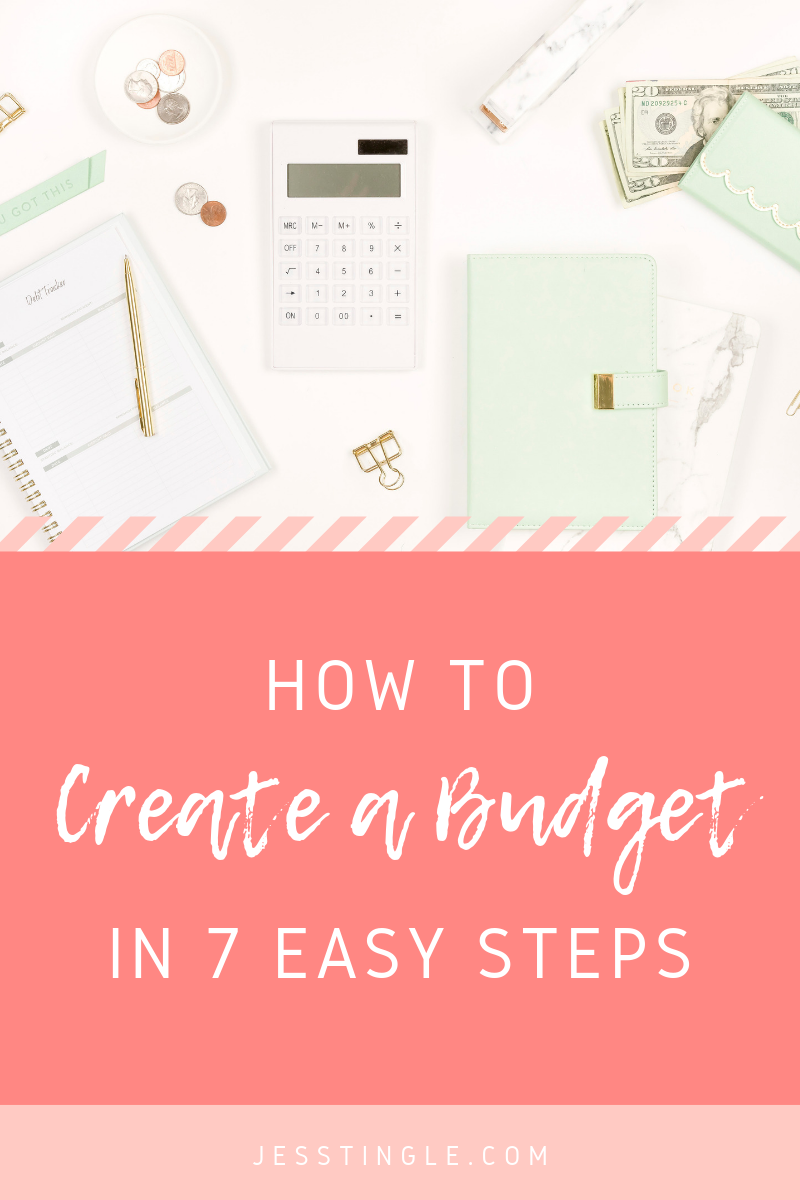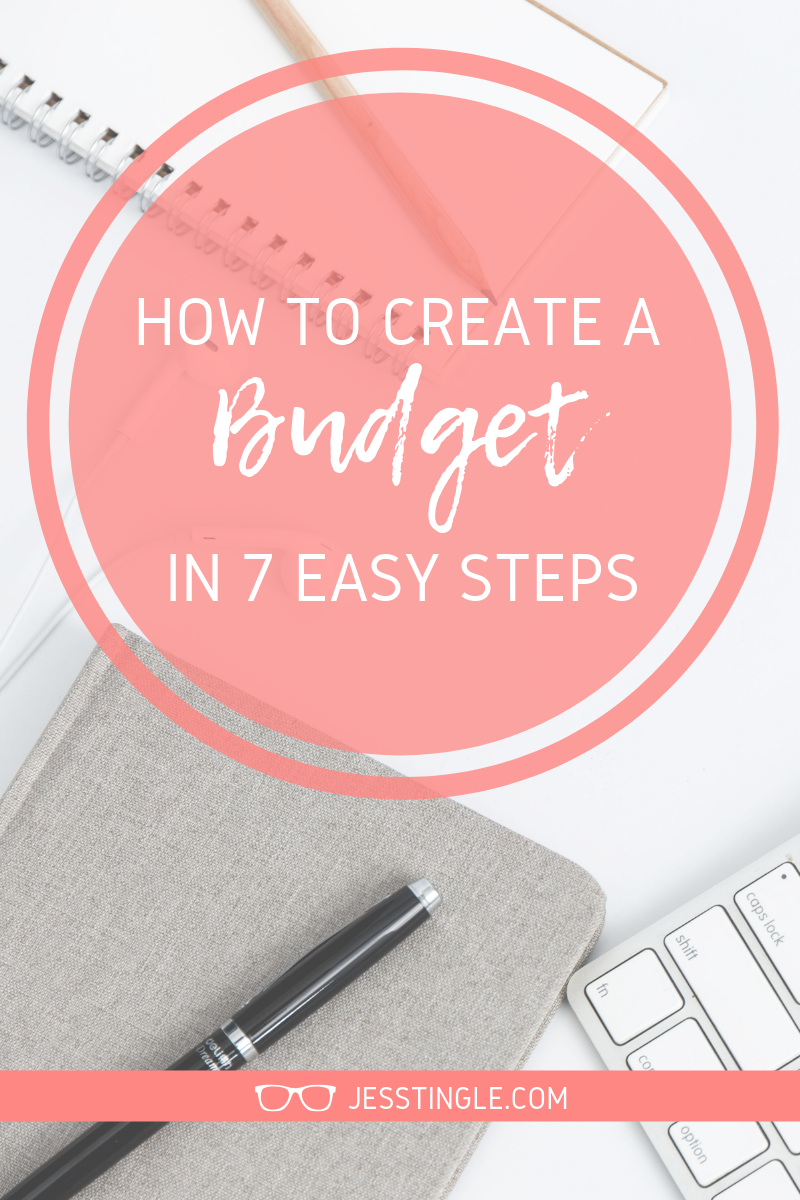How To Create a Budget in 7 Easy Steps
The first time you sit down to create a budget can feel overwhelming and intimidating. Many people procrastinate creating a budget simply because they don’t know where to start. Some people, myself included, avoid it because it seems like something that requires a lot of time and effort we don’t have. The truth is, budgeting is really easy once you get the hang of it and I’ve come up with a quick step-by-step process that will make the first budget quick and easy.
The first budget will take a little longer to create than the rest of your monthly budgets, simply because you will need to come up with some numbers you’ve never thought about before. Don’t let it discourage you. Each month we create a budget and it takes 30 minutes or less. Then we spend about 5 minutes a day (usually less) keeping up with tracking expenses. The time it takes to budget is a small price to pay to get your finances under control and experience freedom.
Let’s get started with the easy way to create a budget.
Related: Why You Need a Budget
Related: The Zero Based Budget Method (& why it works)
1. WRITE DOWN YOUR MONTHLY INCOME
Start with your expected monthly income after taxes. If you are paid a salary, you will already know what this number is. If you work hourly or have irregular income, you will need to estimate your income and then make adjustments throughout the month based on what you are actually paid. Your monthly income should include everything — your wages, tips, bonuses, alimony, child support, cash gifts, etc.
2. WRITE DOWN YOUR MONTHLY FIXED EXPENSES
Next make a list of all your fixed monthly expenses. These are the expenses that are typically the same every month and are absolutely due. The very first one on the list should be the tithe because we want to focus on giving as the very first thing we do with our income. Other fixed expenses typically include rent/mortgage, utilities, phone bills, tuition, groceries, gas, and credit cards/debt payments. These expenses will look different for every family, so make sure you look over your previous bank statements and get an idea of where you’re spending money.
3. WRITE DOWN IRREGULAR/SEASONAL EXPENSES AND CONVERT TO MONTHLY AMOUNTS
This step will save you a lot of money stress down the road. Write down any expenses that only occur a few times a year or less such as taxes, insurance premiums, annual subscriptions, etc. Divide that by the total number of months before the next due date. This amount determines how much you need to set aside in those categories every month so that when the expense occurs you aren’t pinching pennies or scrambling to come up with the funds.
4. WRITE DOWN WHAT’S NEEDED TO REACH FINANCIAL GOALS
It’s important to think about your financial goals before working on the discretionary expenses like eating out because we want to make sure our priorities are focused on reaching our financial goals.
Goals might include:
- Saving for an Emergency Fund
- Saving 15% for Retirement
- Saving for Kid’s College
- Paying off a Mortgage
- Saving for a Large Purchase
- Saving for a Baby
- Etc.
Make sure you’re allocating money to the categories that help get you closer to the next goal. So if you’re paying off debt, consider how much extra money you ideally want to throw towards debt and budget for that.
5. WRITE DOWN DISCRETIONARY (ADJUSTABLE) EXPENSES
Lastly you should write down all the discretionary, or adjustable, expenses. This includes eating out, clothing, entertainment, make up, hobbies, gifts, etc. And this category may also include some adjustable expenses that need to be converted to monthly amounts like we did with the fixed irregular expenses. This may include categories like Christmas, vacation, home improvement, etc. To calculate a monthly Christmas budget, total up how much you plan to spend on Christmas and divide it by how many months you have left to save.
6. SUBTRACT TOTAL EXPENSES FROM TOTAL INCOME
Add up all your expenses and subtract the total from the income you wrote down in step 1. If this number is positive you’re off to a great start! Make sure you allocate every last dollar to a category of the budget. A positive number means you still have income left to allocate, so decide where you want it to go and add it into the budget. If the number is negative, we need to do some adjusting. You either need to increase income or decrease expenses. Start with the discretionary expenses and see how you can make adjustments to categories like eating out, clothing, or anything unessential. The goal is to make the total income minus total expenses equal zero for the Zero Based Budget. When your answer is zero, you’re done with the monthly budget!
7. TRACK YOUR EXPENSES THROUGHOUT THE MONTH
Once the budget is done, you still need to track expense throughout the month to make sure you’re staying within the budget. You can track as you spend or take 5 minutes at the end of the day to go back through all your transactions. We use the EveryDollar app to track expenses and love it. EveryDollar has a free version you can download that works great. If you’re looking for something with slightly less work, EveryDollar does have a paid version which will automatically load your transactions from your bank account and you just need to assign the transactions to a category (and remember to track any cash spending).
Related: 7 Lame Excuses For Not Budgeting: Debunked
Remember, your budget won’t be perfect at first. Expenses will come up that you completely forgot about. You’ll forget to track spending for a few days and have to play catch up. It will be midnight on the 31st and you’ll remember you haven’t created the budget for the next month. Things will happen. The important thing to remember is to keep going despite any setbacks. Commit to budgeting for three months, no matter what, in the beginning. In that amount of time some of the kinks will work themselves out and you will start to get the hang of it. Don’t give up.

